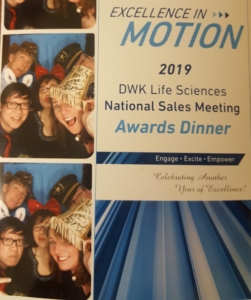
Every spring, I get calls from friends with children who are graduating from college. It’s an exciting time for the parents and the graduates. During these calls, after we complete the small talk of catching up, the parent will usually tell me that their son or daughter is “good at working with people” and therefore would be a good fit for a career in sales. While being good with people may be one characteristic that can help in sales, a solid sales career requires much more than being an interested extrovert.
There are three key pieces required to success in sales. These concepts were important when I started my career cold calling for Pitney Bowes in 1987, but the collective notion was solidified by my colleague, mentor and friend Gerhard Gschwandtner at a conference he conducted in 2015 in San Francisco. The three are skills set, tool set and mindset.
A leader in the sales industry and the CEO of Selling Power, Gschwandtner says, “It’s all about creating the right mindset, building the right skills set and selecting the right tool set.”
Two of these are easily attained. For the skills set, a fledgling salesperson can get training to learn the skills needed. Sales skills might include negotiating, communication, active listening or closing skills. For the tool set, sales tools can be bought or acquired. Sales tools can include a Customer Relationship Management (CRM) system, marketing automation, or video conferencing.
But the mindset cannot be learned or purchased. And the mindset has to come first. As the saying goes, your attitude determines your altitude.
You need the right mindset to achieve peak performance. In an article published on LinkedIn, Gschwandtner says happy salespeople sell 38% more, and that people with a positive mindset live on average 7.5 years longer. The right mindset can boost your confidence, change your negative thinking into positive thoughts, increase your energy level, and reduce your stress. With the right mindset, you have a much better chance of achieving your sales goals and you can make better use of your learned skills and purchased tools.
If you want to succeed in sales, get the right mindset. You can learn the skills. You can get the tools. But without the right mindset, neither the skills nor the tools will do you much good.


 Great sales managers are great sales coaches. It’s critical. Without coaching, sales processes are not applied, sales trainings short-lived, and sales rep performance falls short.
Great sales managers are great sales coaches. It’s critical. Without coaching, sales processes are not applied, sales trainings short-lived, and sales rep performance falls short. If you’re in sales, you need to read
If you’re in sales, you need to read 

